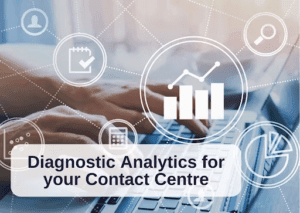According to Gartner Inc.2, having advanced analytics are a key corporate objective, driven by the need to increase user access to advanced analysis and deepen business understanding.
Alexander Linden, Research Director at Gartner3, stated that even though advanced analytics has been around for more than 20 years, big data has increased interest in the market and its position in the industry. The ability to support better decision-making and better business outcomes is now legitimately important to many more business functions than just a few niche groups (like marketing and risk).
Have you ever considered if your decision-making within your business is based on emotions and feelings, or are they based on factual, analysed data, and informed thoughts? Is your decision-making based on several people going into a meeting room and concurring on what really happened, why it happened, and what to do about it? Is it the person that is the loudest or is it the majority vote that wins out the activities that are needed to address a certain problem?
Well, for many contact centres it was true, but until recently there are better ways to unlock your ability to make better decisions through four types of analytics.
Let’s dig into 4 types of analytics, also as defined by Gartner, and better understand how each type of analytics can help you with a comprehensive understanding of the problem and how to go about solving it.
4 Types of Analytics

Descriptive Analytics
Descriptive analytics tells the story of what happened. In the example of your car breaking down, you noticed the light on your dashboard. This light is the indicator of what went wrong. Yet without further diagnostic analytics, you would not know why. Descriptive analytics in contact centres, for example, can respond to questions such as, “What is the Repeat Call Rate?” and “What is the First Contact Resolution rate?” It does so by accurately showing what has happened in the past rolled up into various Key Performance Indicators (KPIs). The source for descriptive analytics can be that of quantitative BI & MIS systems which combine several performance indicators into various formats of reporting. Descriptive analytics can also be generated automatically from qualitative data sources (Calls, Text interactions, etc) using Speech Analytics and Engagement Analytics technologies.
Diagnostic Analytics
Diagnostic analytics is like peering deeper into something with a microscope. In the example of your car that broke down, this could take on different variations and depths of diagnostic analytics. If for example, the coolant light has gone on, one can now (either doing it yourself or getting a specialist to do it for you) 1. pop the hood, 2. Look if there is coolant where it should be, 3. If no coolant, check if there is water in the oil, which then would help to understand that the likelihood of having a blown gasket is very high. Further and deeper analysis until you reach the gasket will confirm the case and enable the right actions to fix it.
To find out why things happened, diagnostic analytics technologies are needed. Sales managers, for instance, can use diagnostic analytics to pinpoint the traits of sales agents who are on track to hit quotas and effectively map the DNA of successful sales. One of the best forms of diagnostic analytics can be thought of in the sense of deep root cause analysis, inherent to interaction intelligence solutions. This is about finding the root cause of an effect or defect observed whether the defect is in Service, Sales, Collections, or Retentions performances. It also entails understanding whether it is an agent-related breakdown or whether something outside of the agent’s control. This can tell a compelling story as to the opportunities & limitations in addressing complex problems.
Predictive Analytics
In its most basic form, if the fault in your car could have been forecasted ahead of time, this can be seen as Predictive Analytics.
Forecasting is the practice of predicting a series of future events across time using predictive analytics. It may also be used to identify uncertainties surrounding a variety of potential outcomes (that is, simulation). It answers the question, “What is likely to happen?“, by letting us know what to anticipate. However, it doesn’t address additional queries like what should be done about it. Predictive modelling, regression analysis, forecasting, multivariate statistics, pattern matching, and machine learning (ML) are some of the approaches used in predictive analytics.
Prescriptive Analytics
In addition to forecasting the fault in your car, prescriptive analytics is when/if the system could tell you ahead of time exactly what you need to do to prevent the breakdown.
Prescriptive analytics tries to motivate action by calculating the optimal approach to obtain or influence the outcome.
The benefits of data-driven decision-making can significantly improve corporate and contact centre performance actions and their associated results.
Don’t get left behind in a broken-down car, speak to Genii today to learn how we can help to mature and empower your change initiatives to an exact science through the use of the various types of analytics.





